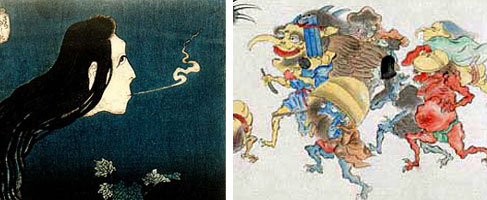
Spirituality was an important part of the martial arts from Japan. Karate was not a series of attacks and defenses, it was a path to a higher state of consciousness. Shinto did not believe in absolute good, evil or even perfection. People were inherently good and bad things were caused by evil spirits. The only way to combat the evil were through purification, prayer and offerings to the kami or spirits. The philosophies of Shinto have been featured as characters, levels and plot of Street Fighter EX and Samurai Spirits. This blog already made mention of how the kami and shimenawa ropes had been featured in the Street Fighter series. Gouki and Gouken were not the only characters that used a heavy dose of spiritual design cues. Kairi and his sisters and even antagonist Garuda brought a large dose of the spiritual aspects lacking from other SF games. The characters debuted in Street Fighter EX, the first 3D SF game. These new heroes and villains tapped into the powers of the ancient world. They predated the legends of fighters like Mas Oyama and Tatsuo Shimabuku. They helped add a new dimension to the world of SF, one that had only been hinted at in prior games. Kairi and Garuda were memorable characters because they were based on the fantastic origins of the karate fable.
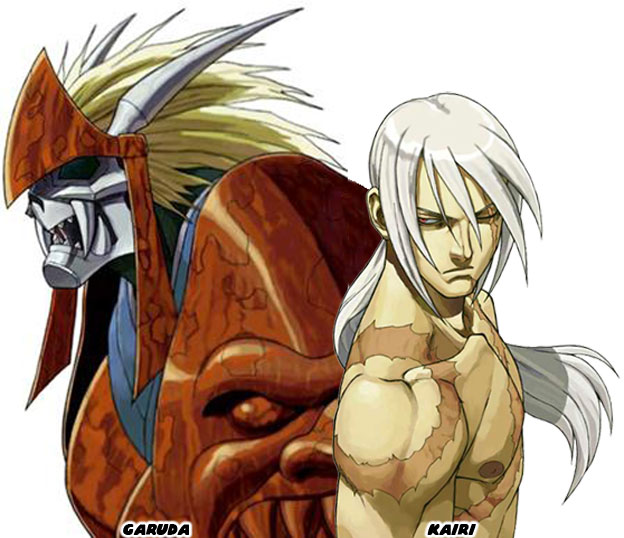
Energy or chi was what gave all people life and allowed them to perform amazing feats of strength. As this concept was adapted into Japanese culture it would be called ki. It was something that appeared magical and the best fighters were blessed or cursed by the gods with excess power. Such was the case for Kairi, a possessed person that had more power flowing through him than even Gouki. Like the main villain in the SF mythology Kairi was becoming consumed by a power he could not control. Garuda was the concept of a possessed fighter taken to the extreme. Garuda was a faceless character, choosing instead to fight under the armor of an ancient warrior. Spikes would protrude from his body and then vanish, as if in some sort of macabre magic trick. It was assumed that whomever was possessed by the dark energy, whomever wore the armor of Garuda, had died long ago.
In the Street Fighter series the way the characters appeared, were dressed, moved and even abilities were pulled from many classic elements. In previous blogs I had mentioned the influence of the Nio and even Fudo Myo-o, the spiritual guardians of Buddhism, had on the development of the Street Fighter and King of Fighter icons. The modern versions of these gods and demons had to be believable to audiences. Certainly Kairi and Garuda could have been incredibly blessed martial artists that were simply eccentric. Gouki was certainly a believable character. He was a fighting master that murdered his master and brother in a fit of rage. Mr. Karate was a believable character as well, he was a master working for the mafia and he hid his identity behind a mask.The various fighting games allowed for the realistic and supernatural to coexist. Masters of the fighting arts could throw fireballs made of chi energy. Some even had the ability to perform a dim mak or "death punch." Kairi very much followed in the footsteps of Gouki and Mr. Karate. Like those figures he was based on ancient traditions and spiritual beliefs. Garuda was a different type of creature altogether. He was created to make physical manifestations out of spiritual elements.
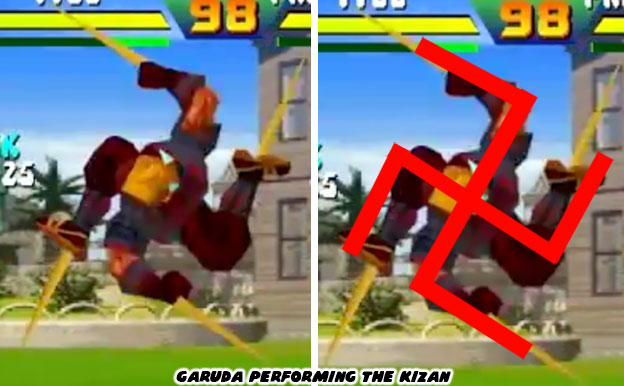
One of Garuda's attacks, the Kizan, had spikes appear out of the hands and feet of the character. He would spin through the air and shred his opponent to ribbons while holding a very awkward pose. Sharp-eyed players noticed that the pose looked very much like a Swastika. This was not an accident. Each of the special attacks of the character had him in a symbolic pose. Sometimes he would move in a way that that made him appear like a statue that could be found at an entrance to a Buddhist temple. Sometimes he would spin outstretched in the shape of a lotus, a Buddhist symbol for purity and spontaneous birth.
Of course to clarify the swastika symbol was ancient and had appeared in cultures all over the world. Only in the 20th century when Adolf Hitler adopted it for his Nazi party did it become regarded as a symbol of evil. The Nazi version actually had the marks going counter to the traditional symbol. In Buddhism the symbol was associated with success and fortune. It was a symbol for good that could often be found on statues of Buddha in India, China and Japan. In many countries maps of the cities often had the swastika placed wherever there was a Buddhist temple. Similarly the map may have a cross to denote where a Christian church was. Even through the 20th century there were still social activist groups, like the Chinese Red Swastika Society, that preserved the good origin of the symbol.
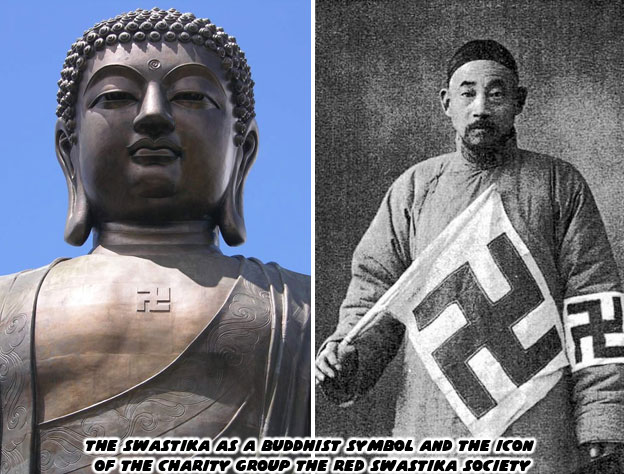
The Kizan did not mean that Garuda was a good character but it was used to demonstrate that he was a divine creature. He was a supernatural force that turned into a physical manifestation. He looked like an ancient warrior, faceless, so that he preserved the symbolism of ancient fighting roots. He was a sort of demonic creature that would have been fought by Sun Wukong, the Monkey King, rather than Bodhidharma. Fans of the Street Fighter series either loved or loathed the character. The same could be said for many of the other new characters introduced through the EX series. There was possibly no other version of the game that was as polarizing to audiences. Supernatural creatures were not new to the genre. Where they worked best was when they were presented in a quasi-believable fashion. Part of the success of many fighting games was how the supernatural was intermixed with the plausible. Great karate fighters were made even better with the advent of the fa jin or "fireball" type attacks. Some even had a dim mak or "death touch" strikes at their disposal. In the story of Street Fighter and other games there were scientists that extracted these metaphysical abilities and turned them into weapons. The spiritual gave way to science and power hungry dictators could harness these techniques to destroy their opponents. Garuda was not the only villain in Street Fighter mythos that had traits that were connected to Buddhism. Seth was the new boss introduced in the Street Fighter IV series. He could absorb the attacks of his rivals and use their techniques against them.
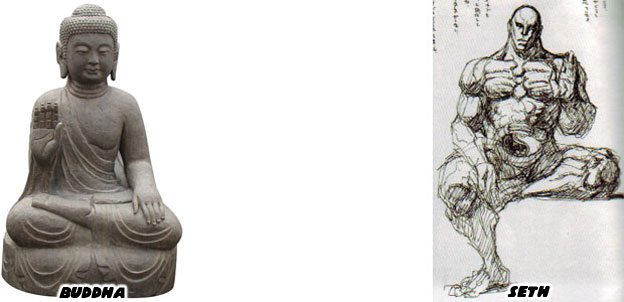
At the core of the character was a yin / yang sphere that generated his power. It was known as the Tanden Engine and allowed him to expel and absorb tremendous amounts of energy. Seth was a grotesque character. His skin tones were flushed out, a dull gray, signifying that perhaps he was either dead or more machine than man. The villain was after all nothing more than a husk for the Tanden Engine. Just as Gouki had been consumed by the Dark Hadou so too was Seth consumed in his quest for more power. The character art and design for Seth were intentionally gruesome. He was supposed to be intense and menacing even while wearing a tailored suit. He was the opposite of the serene image that people thought of when they imagined Buddha. The mechanical core in his belly was a twisted mockery the beliefs cultivated by Eastern Medicine. It robbed the martial artists of what they had worked for and twisted it for his nefarious purposes. Seth was perhaps visually the most extreme Street Fighter villain introduced, with the possible exception of Gill, the demigod. Gouki or Garuda could have existed in the real world. They could have been dangerous martial artists whose legend became inflated to the point where it was hard to distinguish fact from fiction. Yet for other characters in the genre, they were supposed to have supernatural origins as well. They were supposed to be accepted at face value. Take the female martial artist Ameth from Xuan Dou Zhi Wang / King of Combat. She was based on a mythical character from Asian story traditions.
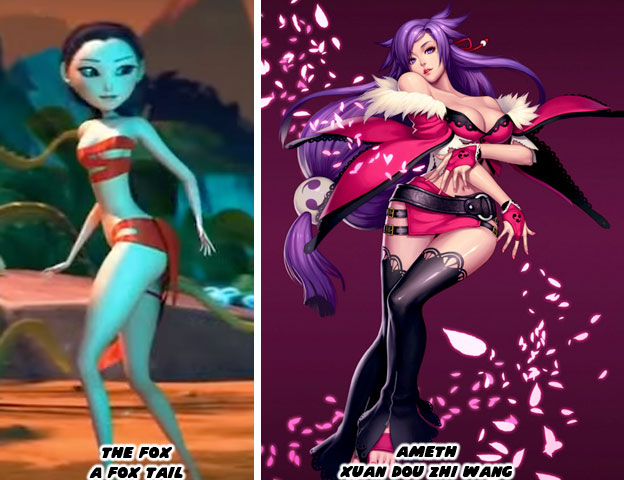
According to the game Ameth was a 998-year-old shape changer. She was a trickster of sorts personified by the Fox. In Native American legends the Coyote was a contemporary character, also known as a trickster and a shape-shifter. Although in some stories the Fox was a temptress that would kill men that she seduced. The divine or demonic Fox creature appeared in many Asian mythologies. In Chinese stories Huli Jing was a divine fox mischievous but also ill-tempered. In Japanese tradition Kitsune was also a divine fox but with nine tails. The fox mask of Kitsune had been used on female ninja characters in manga, animé and video games for decades. In Korea there was Kumiho, possibly the creepiest of all the fox legends. She was an evil spirit that seduced and killed men. A lighthearted version of the legend could be seen in A Fox Tail. The animated short with character designs by Chao Ma demonstrated how some of the best fighters used their heads instead of their hands. Then again, many of the greatest strikers used everything but their hands while developing the ancestor to kung-fu. Hinduism and Buddhism helped carry the martial arts through Asia, but the forms of striking that Bodhidharma had brought to China were not the only styles that influenced the development of kung-fu or karate. There were styles that had reached the southern shores of Japan that were very interesting. The next blog will look at how South East Asia created parallel fighting arts that would rival the legacy of karate. As always if you enjoyed this blog and would like to sponsor me please visit my Patreon page and consider donating each month, even as little as $1 would help make better blogs and even podcasts!

What exactly are the poses referenced for each of Garuda's moves? I love learning details of character designs like this so much.
ReplyDeleteTommy, many of these strikes are based on the rudimentary kata, or forms taught to students. Garuda is demonstrating how effective they can be in an actual fight. His specific stance and form were based on the poses held by the statues of the temple protectors, the Nio and other benevolent demons seen in Japan and China.
DeleteHere's some trivia for you, the individual hand positions used by Gouki, Ryu and Kenshiro while performing their ultimate strikes, the Shun Goku Satsu, Messatsu Goshoryu and 100 Crack Fist respectively are based on the hand positions or Asamyuta Hasta from meditation. Mudra's are hand and body positions used in Buddhism and Hinduism to open up the channels of energy through the body, or chi. It is often seen in the form of a dance and influenced cultures all over Asia. If you've ever seen Ong Bak 3 part 2 Tony Jaa uses a variation of the mudra from the native Thai dance to open up his energy points and heal from his injuries.
Do you plan on doing a series for EX characters/the EX series like you did for Fighting Layer? There's barely any details elsewhere on such stuff and I'd love to learn about all the things Arika did with the characters. I've got a handful of materials if you need it, and I'd love to see more detail about how cool designs like Garuda were. I noticed their hand poses, but not which poses in particular Garuda mimics with stuff like Shuga or Raiga and the like.
Delete(btw, name is "Behemothbear" on Twitter and the like.)
I didn't plan on doing a series on Street Fighter EX. I've actually brought up each of the characters in the past. I described how D. Dark was a predecessor to Preston Ajax. http://www.capcom-unity.com/bigmex/blog/2014/05/08/the-manga-and-fighting-game-connection-part-3
DeleteHow Blair Dame and Pullum Puruna were inspired by Chun-Li: http://www.capcom-unity.com/bigmex/blog/2010/04/26/how_to_design_a_street_fighter_character,_pt._16
Also how Allen Snider was an amalgamation of Bruce Lee and Chuck Norris: http://www.capcom-unity.com/bigmex/blog/2009/05/01/based_on_a_true_story_part_10?pref_tab=Hub and my favorite on the origin of Darun Mister: http://www.capcom-unity.com/bigmex/blog/2009/04/21/based_on_a_true_story_part_2
Ah, sorry if I'm a bit scattered on stuff.
Delete